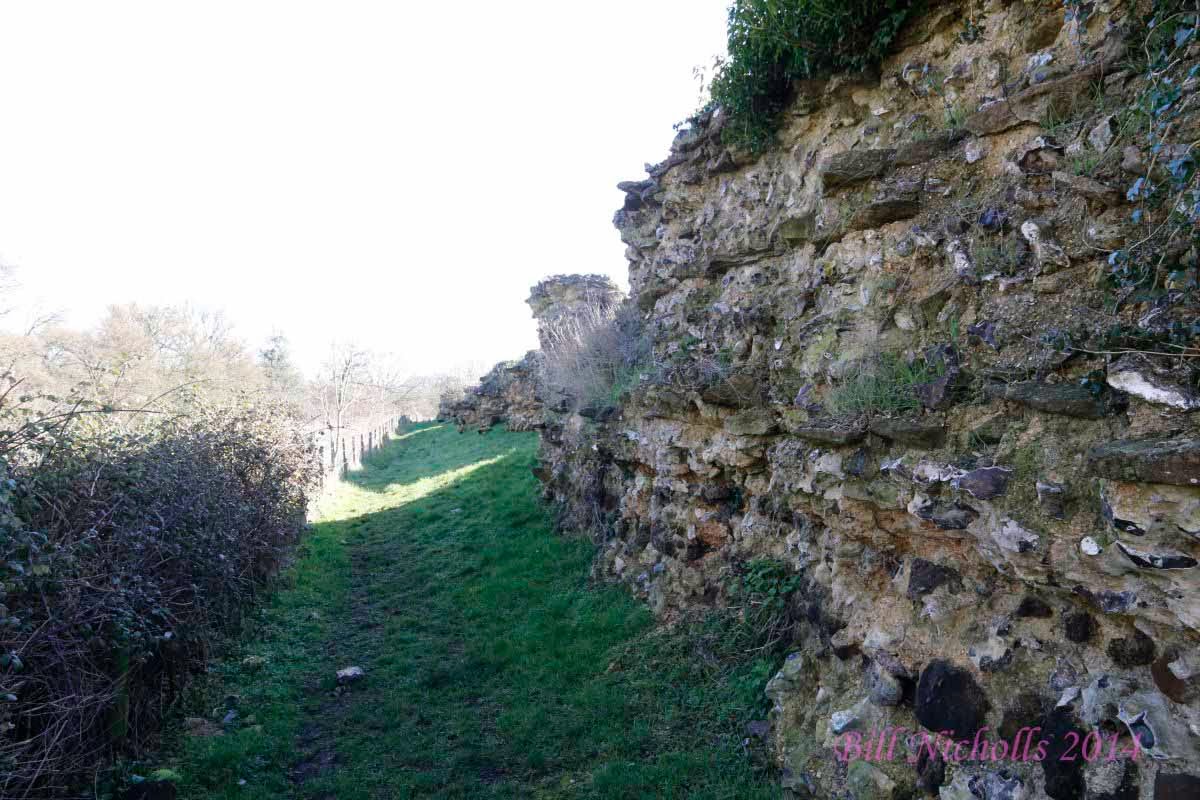Now that should get you thinking with a name like that. Calleva Atrebatum also called Silchester it is a Roman Town not far from Reading. The site was founded by the Atrebates tribe in the first century BC and the walls enclosed area of about 79 acres. After the Roman conquest of Britain in 43AD it was settled and enlarged to 99 acres which is where name Calleva Atrebatum came in.
After the Romans left the Saxons avoided the place making there main towns Winchester & Dorchester so Silchester became deserted and left to neglect for a couple of millennia.
Excavations have taken place since the 1890's and Reading University have become involved since 1970. I have visited the place before with my children when they were young but my wife & I decided to visit the place again and get a few photos.
These three pillars are in the main carpark and were not here the last time I visited
Check the map of the place out first and get an idea of the layout
The walls are on the right here and you can walk all the way round
Lots of wild snowdrops are growing here
This is another of the information boards scattered around the site
This is looking across where the town was towards the South Gate
We went left along the top of the walls
Where you can see some parts of it still in good condition
Apart from the odd tree growing on it
This is the North Gate, if you had taken this in Roman times you would have gone North to Dorchester on Thames passing through the village I live in
Some information on the gate
This is the west side of the gate
The wall on the east side
A cross section though the gate showing the way the wall and gate was built
The wall a bit further round looking towards the East Gate
You can walk along the base here
Back on top, you can see a lump of ivy growing which is part of the problem causing the deterioration of the walls
The Romans certainly knew how to build a straight wall
Looking back to the North Gate where you can see it curves
Looking to the East Gate
The wall which I think is in great condition considering the age
Another section of wall
The wall further on with what looks like one of the watch towers
Near the East Gate is St Mary The Virgins a church just inside the walls, there is also a car park here as well
Not far away you can find the Amphitheatre with an information board to read
This place I found really interesting, mid you you could fit it inside the one at Pompeii easily
This is the arena were it all went on
But I think the two stitch photos give a better idea as to what it looks like
The two people were walking round the arena at the time and give an idea as to the size.
There is a track leading through the centre which passed the centre of the town
Where you can stop off and read about it
And look over at the excavation going on
with another information board
There is a track leading through the centre which passed the centre of the town
Where you can stop off and read about it
And look over at the excavation going on
with another information board
The dig was full of water so it will need pumping out before any more work can be done there.
We did the walls in two parts and after having a picnic walked round to the South gate part way along the base of the walls
which were overgrown in many places
Till you come to near the gate where it is clear
And a couple more information boards are in evidence, one on the local tribes
and one about the South Gate
Which when you see it is a lot bigger than the remains of the North Gate
Looking across the gate to the East Gate
Some of the wall further along from the South Gate
More of the wall which seem bigger on this side
From the walls here you can see Silcheter Church
A Little further along is a brake in the wall where you can walk on either side
From here we walked to the Church where we walked back
St Mary the Virgin from the wall. My wife & I spend a few hours walking round the place I hope you found what we saw interesting.















































How wonderful to be able to explore these places. Great photos Bill and a very interesting post.
ReplyDeleteAh I think I might have visited this site. A friend of a friend invited me for a day in the country to take photos. At the time the site was being excavated by a team of archeologists. I learned a lot from our conversations with the team. And they let me have a small piece of red brick that would have been under the floors. I also learned after any of these excavations they rebury everything again.
ReplyDelete